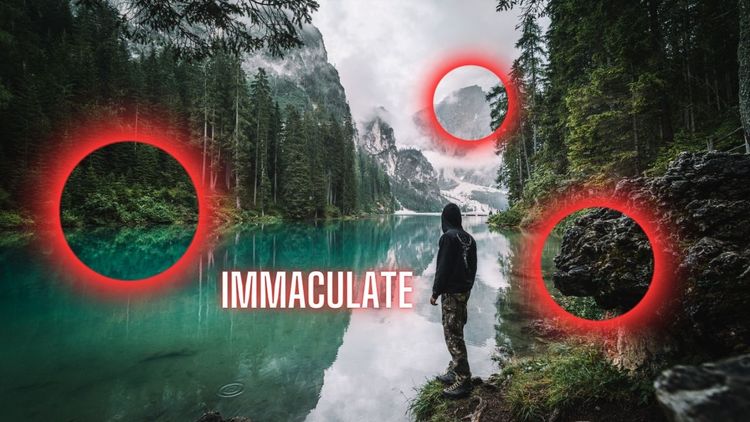What is The Difference Between Focus Bracketing And Focus Stacking? Say Goodbye to Blurry Photos!

If you're a photographer who's always looking to improve your craft, you've likely come across the terms 'focus stacking' and 'focus bracketing.'
These two techniques are often used in macro photography, landscape photography, and other genres where achieving maximum sharpness and depth of field is crucial.
But what exactly do they mean, and how are they different?
To put it simply, focus bracketing is the process of taking a series of photos with slightly different focus points, and then blending them together in post-processing to create an image with greater depth of field.
Focus stacking, on the other hand, involves taking multiple photos at different focus points and then combining them into a single image using specialized software via blending for a stacked image.
While both techniques aim to achieve a bracketed image, they are two steps in the software used to combine them.
In this article, we'll dive deeper into the specifics of each technique and help you determine which one is right for your photography needs.
What does focus bracketing do?
You're going to love how focus bracketing creates images with incredible depth of field and detail that you just can't achieve with a single shot.
This technique takes a series of pictures with the lens' focus distance setting increasing between each image captured until the specified number of images are captured or until infinity focus is reached.
Focus bracketing is particularly useful in macro photography, where small foreground subjects like ice crystals, sea shells, small rocks, leaves, and flowers can be accentuated with greater detail.
Focus bracketing is not the same as focus stacking. While focus bracketing involves capturing a series of images at different focus increment distances, focus stacking process involves taking these images and combining them to create a composite image with greater depth of field.
This technique is often used in landscape photography, where a single image can't capture the entire scene in sharp focus.
By combining several images with different focus points, photographers can create an image with maximum depth of field.
Overall, focus and exposure bracketing and focus stacking are both useful techniques for photographers who want to create images with maximum depth of field and sharpness.
Whether you're capturing a macro shot of a small subject or a landscape scene with a large depth of field, these techniques can help you achieve your desired results.
With a little practice, you can master these techniques and take your photography to the next level.

What does focus stacking mean in photography?
When taking photographs, it's important to consider focus stacking as a technique to capture a single image that is in focus across the entire frame.
Focus stacking in photography involves blending multiple images of different focal points together to create a composite image with a greater depth of field than any of the individual source images.
This technique is particularly useful in macro photography, optical microscopy, and landscape photography where individual images have a very shallow depth of field.
To better understand the difference between focus stacking and focus bracketing, it's important to note that focus bracketing is a technique used to capture a series of images at different focal points, typically with the intention of blending them together later to create a final image.
The key difference between focus stacking and focus bracketing is that focus stacking involves blending the in-focus patches of multiple images together in post-processing to generate a final image, while focus bracketing simply involves capturing a series of images at different focus distances, which can be done automatically if the camera has built-in focus bracketing.
With focus stacking, photographers have the flexibility to generate images with several different depths of field in post-processing and compare them for best artistic merit or scientific clarity.
This technique allows photographers to maintain a sharp focus across the entire image, making everything in focus and creating a final image with a greater depth of field than any of the individual source images.
Whether you're capturing a stunning landscape or a small insect, focus stacking is a powerful tool for achieving a sharp and detailed final image.
| Keyword | Definition |
|---|---|
| Focus stacking | Blending multiple images of different focal points together to create a composite image with a greater depth of field than any of the individual source images. |
| Focus bracketing | Capturing a series of images at different focal points with the intention of blending them together later to create a final image. |
| Depth of field | The range of distances within the image that appear acceptably sharp. |
| Macro photography | Photography that captures close-up images of small objects or organisms. |

What is the difference between focus bracketing and focus stacking?
To achieve maximum depth of field in your photographs, consider capturing a series of images at different focal points and blending them together in post-processing to create a single, sharp image that captures all the details of your subject.
There are two techniques you can use: focus stacking and focus bracketing.
Focus bracketing involves taking multiple photos at different focal points, with the camera automatically adjusting the focus between each shot.
This technique is useful for macro and landscape photography when the foreground lacks larger points of interest and you want to accentuate the details of smaller foreground subjects.
You typically start with the closest focus distance and have the main subject in focus usually with a macro lens needed for focus bracketing, using manual focus - not AF, and start the in-camera focus bracketing.
You should also check for focus breathing compensation, but you can align the images later in a depth compositing tool.
After the images are taken, they are combined to create a single image with a greater depth of field.
Focus stacking, on the other hand, is making use of the blending or auto-blending feature of a suitable software like Helicon Focus or Photoshop.
This technique is useful for any type of photography where you want to increase the depth of field.
It allows you to present the scene in ways that you can't achieve with a single image.
In-camera focus stacking is also available on some cameras, which automates the process of focus stacking.
However, manual focus stacking gives you more control and precision over the final image.

Which Cameras Have Built-In Focus Bracketing Features?
Cameras like the Canon EOS RP, Olympus OM-D E-M1 Mark II, and Sony A7R V - among others - offer the convenience of focus bracketing, allowing photographers to capture multiple shots at different focal points with ease.
This feature is particularly useful in macro photography, where a shallow depth of field can be a challenge.
With focus bracketing, you can take a series of shots at different focal lengths and then merge them in post-processing to create a final image with a greater depth of field.
In-camera focus bracketing is becoming increasingly common in newer high-end camera models.
This is the camera we recommend hands-down for automatic focus bracketing in-camera:

Best Professional Photography Camera With Built-In Focus Bracketing
Sony Alpha 7R V Full-Frame Mirrorless Interchangeable Lens Camera
Fuji cameras also offer this feature, as do other EOS R System cameras like the Canon EOS R5, R6, Olympus E-M10 series cameras, and many PEN series cameras.
However, it's important to note that not all cameras have this feature, and it's always a good idea to check the specifications of your camera before purchasing it if you want this feature.
If you are looking for taking pictures with multiple points of focus you should consider a camera that has focus stacking for maximum depth of field as this feature in-camera so that you do not need to manually press the shutter release in order to take a number of shots, because you could accidentally move the camera and lose focus.
It's worth noting that focus bracketing is not the same as focus stacking. Focus stacking involves manually adjusting the focus between each shot, whereas focus bracketing takes multiple shots at different focal points automatically.
While some cameras may have a focus stacking feature, it's not as common as focus bracketing.
So if you're in need of a greater depth of field in your photos, consider a camera with in-camera focus bracketing.

What kind of photographer needs focus stacking and bracketing?
Photographers who want to capture sharp and detailed images with a greater depth of field, such as macro, landscape, product, and wildlife photographers, may benefit from using techniques like focus stacking and bracketing.
Focus stacking is a technique where multiple images are taken at different focus points and then combined in post-processing to create a final image with a greater depth of field.
This technique is particularly useful for macro photographers who often struggle with shallow depths of field.
By taking multiple images with different focus points and then combining them, macro photographers can create a final image with all the details in sharp focus.
On the other hand, focus bracketing is a technique where multiple images are taken at different exposure settings to ensure that at least one of the images has the correct exposure.
This technique is useful in situations where the lighting conditions are challenging, such as in landscape photography where the foreground and background may have different lighting conditions.
By taking multiple images with different exposure settings, landscape photographers can ensure that they have at least one image with the correct exposure.
Overall, focus stacking and bracketing are techniques that can be useful for any photographer who wants to increase the depth of field and sharpness in their images.
While focus stacking is particularly useful for macro photographers, focus bracketing is useful in challenging lighting conditions, such as in landscape photography.
By using these techniques, photographers can create images that are sharp, detailed, and have a greater depth of field than would otherwise be possible.
What are the best software to do focus stacking?
If you want to create stunning, detailed images with a greater depth of field, you'll need to use the best focus stacking software available.
Focus stacking is a technique that combines multiple images taken at different focal points to create a single image with a greater depth of field.
To achieve this, you need software that can align and blend the images seamlessly.
Some of the best software for focus stacking are Helicon Focus, Adobe Photoshop, and Zerene Stacker.
These programs offer a quick and effective process for aligning and blending images, resulting in sharp and detailed images with a greater depth of field.
They are compatible with both Windows and Mac operating systems, making them accessible to a wide range of photographers.
Other software options for focus bracketing and stacking include CombineZP, inPixio Photo Studio, and Affinity Photos.
These programs also offer focus stacking capabilities, but with varying levels of user-friendliness and advanced features.
Whether you're a beginner or an experienced photographer, there's a focus stacking software that can meet your needs and preferences.

Frequently Asked Questions
Is focus stacking or focus bracketing better for macro photography?
For macro photography, focus stacking is typically the better choice as it allows for a greater depth of field and sharper images.
Focus bracketing can be useful in situations where the subject is moving or in low light conditions.
Can focus stacking or focus bracketing be used with video recording?
To achieve sharp focus throughout your video, you can use focus bracketing or focus stacking.
Both techniques involve taking multiple shots at different focus distances, but stacking blends the images together while bracketing keeps them separate.
Does focus stacking or focus bracketing affect image quality?
Focus stacking and bracketing do not inherently affect image quality. However, improper technique and software limitations can introduce artifacts.
Experimentation with settings and software can produce high-quality results, providing more depth of field than traditional methods.
How many images are typically required for focus stacking or focus bracketing?
To achieve maximum focus depth, focus stacking or bracketing requires multiple images with different focus points.
Typically, between 5 to 30 images are required, depending on the lens, aperture, and desired depth of field.
Are there any limitations to using focus stacking or focus bracketing?
When using focus stacking or bracketing, limitations may include the need for a tripod, potential for motion blur, and difficulty with moving subjects.
However, these techniques offer the ability to achieve greater depth of field and sharper images.
Conclusion - In-Camera Focus Stacking & Focus Bracketing For Maximum Depth Of Field
Congratulations! You now have a comprehensive understanding of focus stacking and focus bracketing in photography.
Focus bracketing is a technique used to take multiple shots with varying focus points, while focus stacking combines these images into one final image with greater depth of field.
The difference lies in the process and end result.
Not all cameras have a built-in focus bracketing feature, so it's important to check your camera specifications before attempting the technique.
If you're a landscape, macro, or product photographer, focus stacking and bracketing can greatly enhance your images.
Some popular software options for focus stacking include Helicon Focus, Zerene Stacker, and Adobe Photoshop.
By mastering these techniques, you can take your photography to the next level and capture stunning images with greater depth and detail.
Don't be afraid to experiment and see what works best for you and your photography style.
Happy shooting!
Your friend,
Ben
This professional camera has built-in focus stacking:

One of the best hybrid camera for working professionals:







